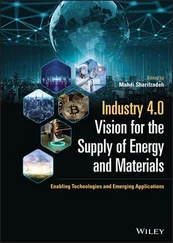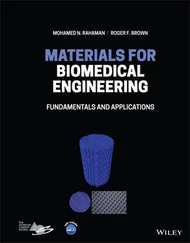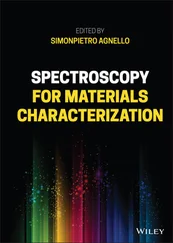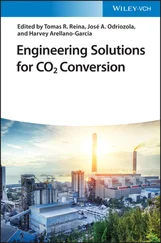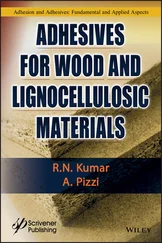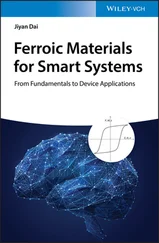Materials for Solar Energy Conversion
Здесь есть возможность читать онлайн «Materials for Solar Energy Conversion» — ознакомительный отрывок электронной книги совершенно бесплатно, а после прочтения отрывка купить полную версию. В некоторых случаях можно слушать аудио, скачать через торрент в формате fb2 и присутствует краткое содержание. Жанр: unrecognised, на английском языке. Описание произведения, (предисловие) а так же отзывы посетителей доступны на портале библиотеки ЛибКат.
- Название:Materials for Solar Energy Conversion
- Автор:
- Жанр:
- Год:неизвестен
- ISBN:нет данных
- Рейтинг книги:5 / 5. Голосов: 1
-
Избранное:Добавить в избранное
- Отзывы:
-
Ваша оценка:
- 100
- 1
- 2
- 3
- 4
- 5
Materials for Solar Energy Conversion: краткое содержание, описание и аннотация
Предлагаем к чтению аннотацию, описание, краткое содержание или предисловие (зависит от того, что написал сам автор книги «Materials for Solar Energy Conversion»). Если вы не нашли необходимую информацию о книге — напишите в комментариях, мы постараемся отыскать её.
This book provides professionals and students with a resource on the basic principles and applications of solar energy materials and processes, as well as practicing engineers who want to understand how functional materials operate in solar energy conversion systems.
Audience
Materials for Solar Energy Conversion — читать онлайн ознакомительный отрывок
Ниже представлен текст книги, разбитый по страницам. Система сохранения места последней прочитанной страницы, позволяет с удобством читать онлайн бесплатно книгу «Materials for Solar Energy Conversion», без необходимости каждый раз заново искать на чём Вы остановились. Поставьте закладку, и сможете в любой момент перейти на страницу, на которой закончили чтение.
Интервал:
Закладка:
Amorphous Silicon
One of the most widely spread techniques is amorphous on thin film by plasma-enhanced chemical vapor deposition method, approximately 5% to 7%, and for double, triple junction raised upto 10% [31]. The following materials that are generated from amorphous silicon are amorphous silicon (a-Si), amorphous silicon germanium (a-SiGe), microcrystalline silicon (c-Si), amorphous silicon nitride (a-SiN), and nano-crystalline silicon (nc-Si) [32].
Cadmium Telluride
This material is simple for deposition and best appropriate to large scale industries. It produces high efficiency than other solar cells on thin film technique but its more toxic element [33].
1.10.2 Applications
Few applications are noted here as follows:
✓ Irrigation purposes
✓ In remote areas to supply electricity for street lights
✓ Refrigeration field
✓ In buildings
✓ Satellite communication
✓ Climate monitoring system, etc.
1.11 Photovoltaic Thermal Systems
When exposed to open atmosphere, the silicon solar cells may be exaggerated over a period of years due to change in climatic conditions such as humidity, temperature, and air [34]. Photovoltaic silicon modules produce lesser efficiency because of higher temperatures in summer season. Researchers stated that 5% percentage of efficiency would be fallen for every 10°C raise in temperature range since few amount of temperatures could not captured properly by the modules [35]. To overcome this type of problems, modern technology is established by scientists as photoelectric method, namely, photovoltaic thermal systems. This system is adopted by the combination of two models that are photovoltaic and solar thermal collectors, which results in better efficiency [36]. However, overall efficiency will be fallen during summer climatic conditions, so that fluid medium is used to improve the performance of a PV/T system. In the recent days, newly introduced mediums are nanofluids in order to increase performance even better than using water-based mediums [37, 38].
1.12 Conclusion
Applications and developing technologies of solar thermal energy resources on both domestic and industrial purposes are discussed in this chapter. The improvement of solar power energy in terms of quality products as well as utilization of various fields is studied. Even though there are many methods for conversion of solar energy into other forms of energy, suitable solar thermal collector is designed based on the applications related to systems arrangement. It was identified that solar thermal collector and photovoltaic thermal systems are more viable for different industrial and domestic usages.
Solar power systems compared with other energy conversion systems acquires a less initial cost with minimal emission generation. Possibility of integrated solar energy conversion systems over conventional method related to industrial applications like heating and cooling has more benefits than other surviving techniques.
References
1. Mekhilef, S., Saidur, R., Safari, A., A review on solar energy use in industries. Renewable Sustainable Energy Rev ., 15, 4, 1777–1790, 2011.
2. Muneer, T., Maubleu, S., Asif, M., Prospects of solar water heating for textile industry in Pakistan. Renewable Sustainable Energy Rev ., 10, 1, 1–23, 2006.
3. Bazen, E.F. and Brown, M.A., Feasibility of solar technology (photovoltaic) adoption: A case study on Tennessee’s poultry industry. Renewable Energy , 34, 3, 748–754, 2009.
4. Mekhilef, S., Circular economy and renewable energy through industrial applications, in: Constructing a Green Circular Society , vol. 24, p. 121.
5. Sabishchenko, O., Opportunities for Synergy Management between Renewable Energy Sources, in: Integration of fundamental and applied science in the paradigm of post-industrial society , vol. 1, pp. 22–24, 2020.
6. Tampakis, S. et al ., Citizens’ views on various forms of energy and their contribution to the environment. Renewable Sustainable Energy Rev ., 20, 473482, 2013.
7. Devabhaktuni, V. et al ., Solar energy: Trends and enabling technologies. Renewable Sustainable Energy Rev ., 19, 555–564, 2013.
8. Xia, X. and Xia, J., Evaluation of potential for developing renewable sources of energy to facilitate development in developing countries, in: 2010 Asia-Pacific Power and Energy Engineering Conference , IEEE, 2010.
9. Iqbal, M., An introduction to solar radiation , Elsevier, Amsterdam, Netherlands, 2012.
10. Khaniki, H.B., Thermal Design and Analysis of a Small Satellite , Applied Science and Research Association, Lisle, USA, 1994.
11. Tiwari, G.N. and Mishra, R.K., Advanced renewable energy sources , Royal Society of Chemistry, Burlington House, London, 2012.
12. Kongtragool, B. and Wongwises, S., A review of solar-powered Stirling engines and low temperature differential Stirling engines. Renewable Sustainable Energy Rev ., 7, 2, 131–154, 2003.
13. Langniss, O. and Ince, D., Solar water heating: a viable industry in developing countries. Refocus , 5, 3, 18–21, 2004.
14. Schnitzer, H., Brunner, C., Gwehenberger, G., Minimizing greenhouse gas emissions through the application of solar thermal energy in industrial processes. J. Cleaner Prod ., 15, 13–14, 1271–1286, 2007.
15. Goyal, R. and Tiwari, G., Performance of a reverse flat plate absorber cabinet dryer: a new concept. Energy Convers. Manage ., 40, 4, 385–392, 1999.
16. Proctor, D. and Morse, R., Solar energy for the Australian food processing industry. Sol. Energy , 19, 1, 63–72, 1977.
17. Kalogirou, S., The potential of solar industrial process heat applications. Appl. Energy , 76, 4, 337–361, 2003.
18. Li, Z.-S. et al ., Application and development of solar energy in building industry and its prospects in China. Energy Policy , 35, 8, 4121–4127, 2007.
19. Kulkarni, G.N., Kedare, S.B., Bandyopadhyay, S., Design of solar thermal systems utilizing pressurized hot water storage for industrial applications. Sol. Energy , 82, 8, 686–699, 2008.
20. Kalogirou, S.A., Solar thermal collectors and applications. Prog. Energy Combust. Sci ., 30, 3, 23–295, 2004.
21. Kalogirou, S., Lloyd, S., Ward, J., Modelling, optimisation and performance evaluation of a parabolic trough solar collector steam generation system. Sol. Energy , 60, 1, 49–59, 1997.
22. Hurtado, P. and Kast, M., Experimental study of direct in-situ generation of steam in a line focus solar collector. Final report , Research Engineering Associates, Palo Alto, CA (USA), 1984.
23. Smith, C.C., Solar process drying of potato products, in: International Conference on Energy Use Management , 24–28 Oct 1977, Pergamon Press, Tucson, Arizona (USA), 1977.
24. Nogueira, M. and Black, A., Basics of Solar Electricity: Photovoltaics (PV), in: Northern California Solar Energy Resource Guide , pp. 1–4, 2003.
25. Libo, W., Zhengming, Z., Jianzheng, L., A single-stage three-phase grid-connected photovoltaic system with modified MPPT method and reactive power compensation. IEEE Trans. Energy Convers ., 22, 4, 881–886, 2007.
26. Park, J.-H. et al ., Dual-module-based maximum power point tracking control of photovoltaic systems. IEEE Trans. Ind. Electron ., 53, 4, 1036–1047, 2006.
27. Bruton, T., General trends about photovoltaics based on crystalline silicon. Sol. Energy Mater. Sol. Cells , 72, 1–4, 3–10, 2002.
28. Braga, A. et al ., New processes for the production of solar-grade polycrystalline silicon: A review. Solar Energy Mater. Sol. Cells , 92, 4, 418–424, 2008.
Читать дальшеИнтервал:
Закладка:
Похожие книги на «Materials for Solar Energy Conversion»
Представляем Вашему вниманию похожие книги на «Materials for Solar Energy Conversion» списком для выбора. Мы отобрали схожую по названию и смыслу литературу в надежде предоставить читателям больше вариантов отыскать новые, интересные, ещё непрочитанные произведения.
Обсуждение, отзывы о книге «Materials for Solar Energy Conversion» и просто собственные мнения читателей. Оставьте ваши комментарии, напишите, что Вы думаете о произведении, его смысле или главных героях. Укажите что конкретно понравилось, а что нет, и почему Вы так считаете.


